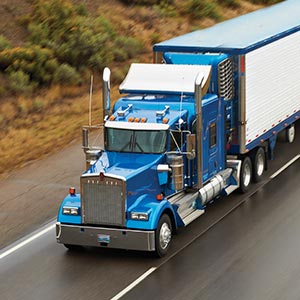What markings must be on a CMV?
From small to large carriers and in mixed fleets, know the marking requirements.
The basics:
The marking requirements for Commercial Motor Vehicles (CMVs) are found in §390.21. The markings need to be displayed on both sides of the vehicle, including:
- The legal name or single trade name of the company operating the vehicle, and
- The motor carrier identification number, issued by the Federal Motor Carrier Safety Administration (FMCSA), preceded by the letters “USDOT.” Other points:
- Letters to be in “sharp” contrast to the background
- Be readily legible, during daylight hours, from a distance of 50 feet
What if there are two or more names on the vehicle?
The FMCSA does not regulate how a vehicle is branded, what they do care about is quickly identifying which company or carrier is currently operating the vehicle. If there are multiple names on the vehicle, this could be a confusing task leading to uncertainty. For this reason, if there is more than one name on the vehicle, the vehicle marking needs to include the words “operated by” followed the legal or single trade name of the company operating the vehicle, then the letters “USDOT” followed by the carrier’s identification number issued by the FMCSA. Only one USDOT number may be visible on the vehicle.
Should rented vehicles have the rental company’s marking, or the renter’s (lessee) information?
Vehicles that are rented or leased for more than 30 days need to be marked as above. Since rentals often carry the renting company’s name, the vehicle would need to be marked using the “operated by” provision above.
When the rental is less than 30 days, the vehicle may be marked with the rental company’s name and USDOT number if the rental/lease agreement entered into conspicuously contains the following information:
- The name and complete physical address of the principal place of business of the renting motor carrier;
- The USDOT number issued to the renting motor carrier by the FMCSA, preceded by the letters “USDOT.” In lieu of the identification number required in this paragraph, the following may be shown in the rental agreement:
- Information which indicates whether the motor carrier is engaged in “interstate” or “intrastate” commerce; and
- Information which indicates whether the renting motor carrier is transporting hazardous materials in the rented CMV;
- The sentence: “This lessor cooperates with all Federal, State, and local law enforcement officials nationwide to provide the identity of customers who operate this rental CMV”; and
- The rental agreement entered into by the lessor and the renting motor carrier is carried on the rental CMV during the full term of the rental agreement.
What about a driver that is “leased on” to a carrier?
When a driver owns his or her own vehicle and is “leased on” with a carrier, for compliance purposes, the driver is considered an employee of the carrier. The leased driver’s vehicle needs to be marked with the carrier’s name and USDOT number, even if the driver has their own USDOT number or authority.
J. J. Keller® DOT Authority Services will help you obtain the proper trucking authority registration and credentials you need to operate legally, including US DOT Number, UCR, MC Number, and Process Agent BOC-3 services.



